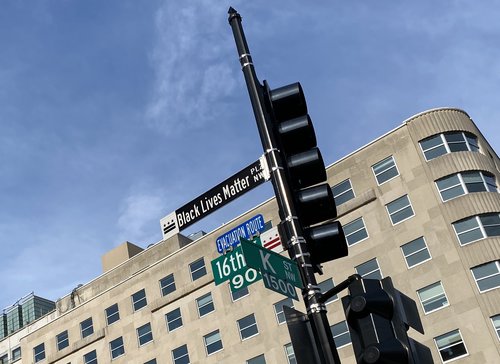Corporate Social Responsibility: Past, Present, And Future
There is no such thing as business as usual. The coronavirus crisis has shown that businesses can change dramatically in a matter of days.
Business’s role in society has changed even more dramatically over the last century. With these changes, corporate social responsibility (CSR) has evolved as well.
Today, CSR is a big deal. Fortune Global 500 firms spend roughly $20 billion on corporate social responsibility per year. Massive companies take outspoken positions on diversity, inclusion, education, and the environment. Executives invest corporate dollars in not-for-profit enterprises that benefit communities on the other side of the world.
These practices would have amazed America’s earliest capitalists. How did we get to this point?
Let’s take a look at the history of corporate social responsibility: past, present, and future.
Industrial Revolution and World War
The history of corporate social responsibility has its roots in the Industrial Revolution. The Industrial Revolution led to a reorganization of society around corporations. Farmers moved to cities and company towns to take higher-paying jobs in factories.
The late 19th and early 20th century are often viewed as a period of corporate irresponsibility. Indeed, this era did produce mass worker exploitation, unsafe working conditions, and excessive pollution. Upton Sinclair captured this strife in his 1905 novel The Jungle, which focused on the Chicago meatpacking industry.
Yet successful early industrialists recognized the necessity of corporate social responsibility. Leading corporations realized that healthy employees improved productivity and profits. Others took a spiritual interest in helping the less fortunate and giving back.
Milton Hershey exhibited both of these motivations when he founded his chocolate company in 1894. He designed a park for his company town and made sure that factory families had access to leisure activities. The town also included a community greenhouse and plant nursery, and Hershey employees received cheap credit that allowed most to become homeowners.
In 1909, Hershey and his wife Catherine established the Milton Hershey School for orphans. The boarding school still serves over 2,000 in-need students across 14 grades tuition-free.
Wartime patriotism accelerated the development of corporate social responsibility. American companies donated food and supplies to Allied nations under the Lend-Lease Act during World War II. Corporations repurposed factories to meet critical supply shortages.
A cross-sectional study of Minnesota companies shows how corporations adopted CSR efforts to wartime. Spam-manufacturer Hormel contributed heavily to the Lend-Lease program. 3M developed new adhesives to help pilots and healthcare workers. General Mills and Pillsbury developed education programs to help households survive on rations. And food company Cargill temporarily became a shipbuilder.
These alliances between business and government had long-lasting effects on companies’ approaches to corporate social responsibility. Business’s contribution to the war effort reinforced the idea that private enterprise includes civic duties.
Post-War: Civil Rights and Sustainability
Corporations took an active role in defining their place in society after World War II. Executives experienced new pressures to serve as a social force for good. These pressures included the increasing influence of unions and globalization, the threat of communism, and growing public unease about ballooning mega-corporations. More corporate leaders began to understand that their businesses carried responsibilities beyond their four walls.
In 1953, academic Howard Bowen described corporate social responsibility as “the obligations of businessmen to pursue those policies, to make those decisions, or to follow those lines of action which are desirable in terms of the objectives and values of our society.” Bowen’s systematization of corporate social responsibility has earned him the title of “Father of Corporate Social Responsibility.”
The Civil Rights Era challenged organizations to take a stand on social justice issues. Small black-owned businesses provided vital material support to activists through the 1960s. Larger companies took longer to adapt.
For example, Coca-Cola President J. Paul Austin threatened to move Coke headquarters when Atlanta business elites refused to support a 1964 gala honoring native son Martin Luther King Jr. (Although that was a notable stance, there were still some necessary measures Coke took longer to act on, like King’s calls to include black leadership in its executive ranks.)
Mid-20th century corporations also responded to the nascent environmental movement. Books like Rachel Carson’s Silent Spring (1962) and Ralph Nader’s Unsafe at Any Speed (1965) highlighted the drawbacks of businesses’ postwar acceleration.
Throughout the 1970s and 1980s, brands not only responded to environmental regulations but also made voluntary “green” changes. This period produced brands recognized today for their environmental consciousness, such as Whole Foods and Burt’s Bees
CSR Today
Today’s prevailing corporate social responsibility strategies took shape in the final decades of the 20th century.
CSR took on a more formal role within corporations of the 1980s. Businesses began to earmark resources for dedicated CSR departments and leaders. Over time, executives began to understand that their companies should avoid isolating these departments.
Leading companies have drawn on CSR principles to inform all manner of organizational decisions. Organizations have closely allied CSR with marketing, public relations, diversity and inclusion, and human resources. CSR plays a leading role in telling brands’ stories and attracting top talent. More importantly, brands have leveraged CSR to orient their company’s purpose and vision.
CSR today reflects a global mindset. Consumers no longer expect major corporations to keep just their backyards clean. Fortune 500 companies have taken public stances on climate change and have adopted CSR practices that look up and down supply chains. Companies have embraced a globalizing labor market with training and education programs that reach across borders to engage potential employees and younger generations.
Consensus has emerged that businesses exist to provide value for all stakeholders — customers, employees, suppliers, and the global community, not just shareholders. The Business Roundtable reflected this consensus in its 2019 statement on the purpose of the corporation, which was signed by 181 Fortune 500 CEOs.
The Future: Climate Change, Social Justice, and Technology
The future of corporate social responsibility holds exciting prospects for the world. Today’s CSR trends and innovations suggest that CSR will play an increasingly important role in how companies approach business and engage communities.
With the Black Lives Matter movement and other platforms that address historic inequities, companies have adopted forward-leaning approaches to social justice issues. Standard diversity programs will no longer meet stakeholder expectations. Harvard Business Review speculates that we are entering an era of “Corporate Social Justice.”
HBR describes corporate social justice as “a reframing of CSR that centers the focus of any initiative or program on the measurable, lived experiences of groups harmed and disadvantaged by society.” Corporate social justice requires “deep integration” with all of a business’s core functions.
Customers and employees have similarly raised the bar with respect to sustainability. Leading sustainability practices have already shifted focus from minimizing local harm to reversing global climate change. Enterprising organizations like Terrapass will help companies go from carbon-neutral to carbon-negative.
As with past eras in the history of corporate social responsibility, , technology will continue to help CSR evolve. Social distancing requirements have already required companies to innovate and adopt virtual volunteering initiatives. Many of these initiatives will likely remain in place well past the current crisis. Technology will also likely disrupt major industries and create worker dislocation.
Leading companies will have an opportunity to address this dislocation through education and upskilling, creating value not only for their shareholders but also for society.
What are your predictions for the next 20 years of corporate social responsibility?


